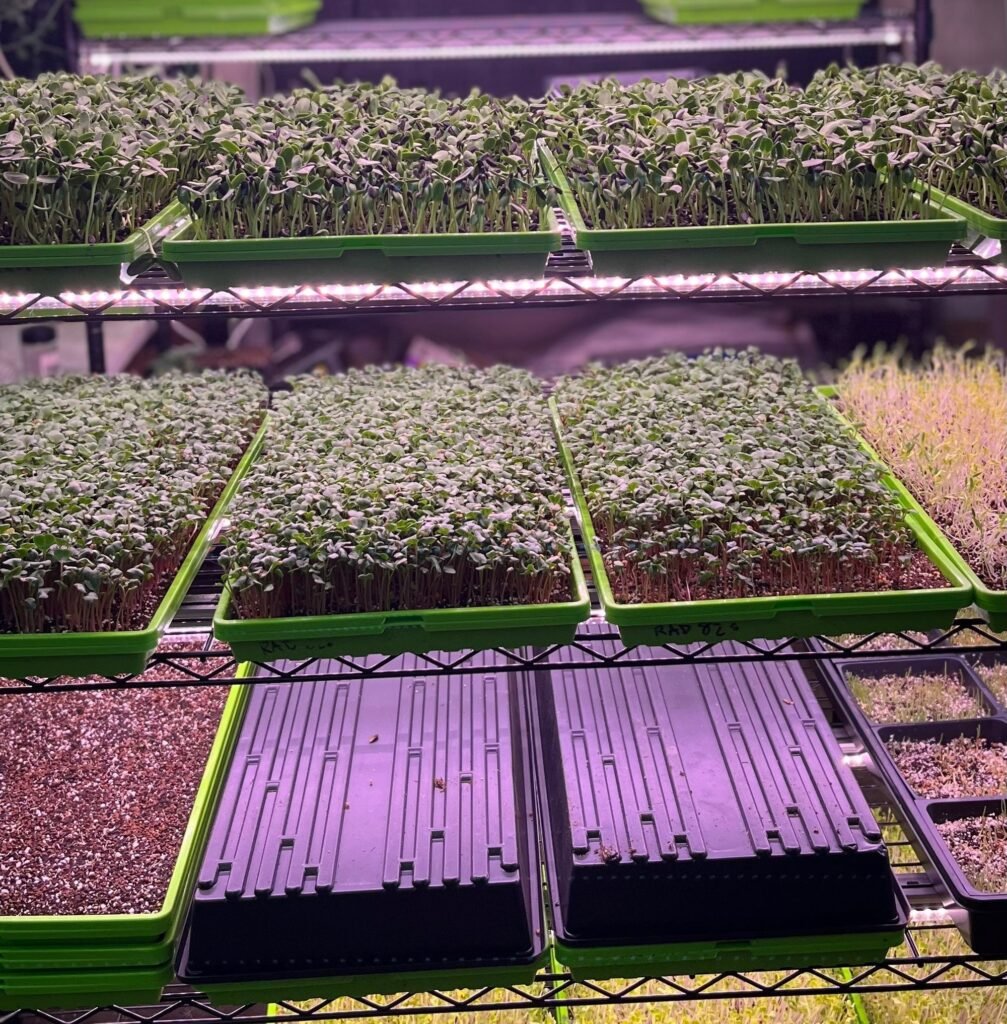Microgreens indoor-farming has become an attractive business opportunity due to its unique advantages. This modern agricultural method not only meets the increasing demand for healthy, sustainable food options but also offers entrepreneurs a cost-effective and scalable model. Below, we explore why microgreens farming is a profitable venture for anyone looking to enter the agricultural sector.
High Market Demand for Microgreens
Microgreens have carved out a niche in the food industry, thanks to their vibrant flavors, high nutritional value, and visually appealing appearance. They are a favorite among chefs who use them to elevate the presentation and taste of dishes as garnishes. Beyond professional kitchens, health-conscious consumers love incorporating microgreens into everyday meals like salads, sandwiches, and smoothies, enriching their diets with these nutrient-packed greens.
The growing awareness of the benefits of organic and superfoods has further boosted the popularity of microgreens. As people increasingly prioritize fresh, local, and healthy food options, the market for microgreens continues to expand. This trend creates a consistent and lucrative demand, making microgreens a smart choice for both small-scale and commercial growers.
Low Startup Costs for Microgreens Farming
Starting a microgreens farm doesn’t require a large capital investment, making it accessible to entrepreneurs with limited budgets. The essentials include trays, quality seeds, a growing medium (such as soil or coconut coir), and LED grow lights for indoor setups. With these basic supplies, you can begin growing microgreens in a small area like a spare room, garage, or basement.
Compared to traditional farming, which often involves high equipment costs, large land requirements, and significant labor, microgreens farming is a low-risk option. Additionally, growers can scale production gradually by reinvesting profits into expanding their operations. This makes microgreens farming an ideal business model for beginners looking to enter agriculture without significant financial barriers.
Fast Growth Cycle Ensures Quick Returns
One of the standout advantages of microgreens is their rapid growth cycle. Most varieties, such as radish, arugula, and sunflower, are ready for harvest within 7 to 21 days after planting. This short turnaround time allows growers to plant, harvest, and sell their products multiple times each month, ensuring a steady cash flow.
Unlike traditional crops that may take months to mature, microgreens provide a continuous and predictable income. This quick return on investment makes them an attractive option for farmers and entrepreneurs looking to see immediate results from their efforts.
High Profit Margins Make Microgreens a Lucrative Crop
Microgreens are one of the most profitable crops you can grow, with an average selling price ranging from $20 to $50 per pound, depending on the variety and market. Their compact growing requirements mean you can produce significant yields even in small spaces, such as a single rack system.
Operational costs are relatively low since microgreens require minimal water, soil, and energy compared to traditional farming. By optimizing production and targeting high-value markets like upscale restaurants, health food stores, and direct-to-consumer sales, growers can achieve impressive profit margins.
When combined with the ability to scale the business and diversify offerings, microgreens farming offers an unparalleled opportunity for sustained profitability.
Microgreens farming is a modern agricultural model that aligns with current food trends and consumer needs. Whether you’re a seasoned farmer or a new entrepreneur, this low-cost, high-reward venture is an excellent way to tap into the thriving market for fresh, nutrient-dense foods.
Photo: rcroot.com


